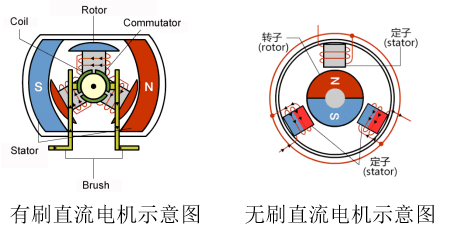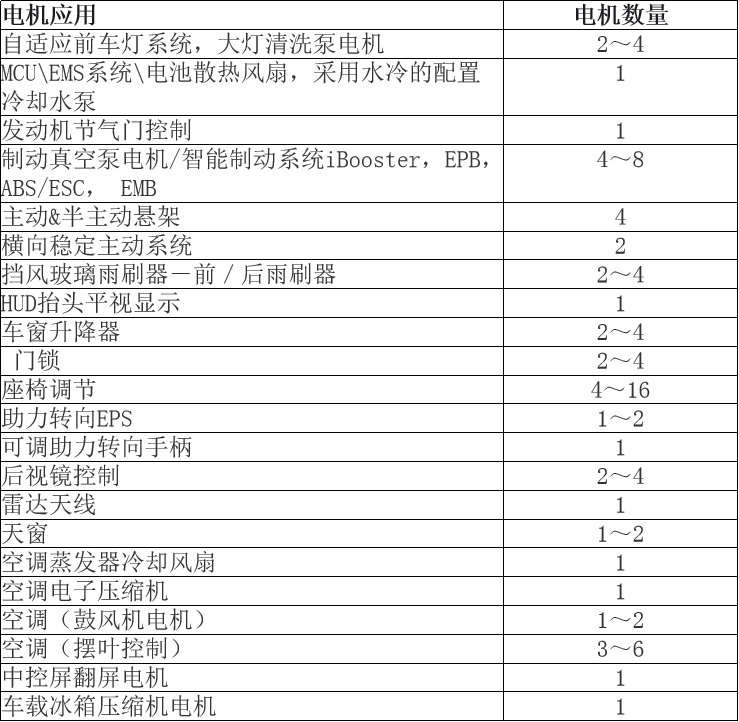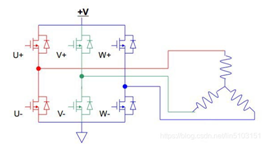The market for brushless DC motors quietly rises
Time:2024-02-02
Views:324
The automotive BLDC motor market is quietly emerging. In recent years, with the continuous maturity of automotive electronic control technology, the requirements for automotive comfort and safety are also increasing. The components used for action execution and stroke control in control systems - vehicle



 Global BLDC Motor Industry Market Regional Distribution (Unit%)
Global BLDC Motor Industry Market Regional Distribution (Unit%)
 BLDC motor three-phase bridge driver circuit
BLDC motor three-phase bridge driver circuit
1、 The automotive BLDC motor market is quietly emerging
In recent years, with the continuous maturity of automotive electronic control technology, the requirements for automotive comfort and safety have also been raised. The application of automotive micro motors, which are components used for action execution and stroke control in control systems, has become increasingly widespread, giving rise to a technology application that many people may not have noticed yet. This is the widespread application of brushless DC motors (BLDC) in automobiles, and their market is quietly emerging, And it grows rapidly.
Automotive control motors usually include brushless DC motors, stepper motors, hollow core motors, brushless DC motors (BLDC), etc. Brushed DC motors have been widely used in various vehicle systems, such as air conditioning blowers, electric fans, wipers, electric rearview mirrors, and electric windows. However, due to some inherent problems such as short brush life, poor EMI performance, and low efficiency, more and more vehicles have replaced brushed DC motors with brushless DC (BLDC) motors.

Compared to brushless DC motors, BLDC has faster speed, higher efficiency, lower noise, and higher operational reliability, but also requires complex electronic control. In today‘s increasingly sophisticated electronic control technology, the brushless DC motor market has rapidly expanded. In addition to traditional fuel pumps, cooling water pumps, HVAC blowers, and electronic fans, it has also been widely used in autonomous driving and new energy vehicles, such as air-cooled systems in MCU/EMS/battery systems, electronic water pumps in water-cooled systems, electronic compressors in air conditioning systems, electronic vacuum pumps for brake assist, as well as AFS, seat adjustment, and electric power steering EPS. The following table shows the usage of motors in typical new energy vehicles. In short, wherever there is a driving mechanism for movement, a motor is required, and more brushless motors are used.

Application of Brushless DC Motor in Automobile

2、 The competitive landscape of automotive BLDC motors
From the perspective of market trends, Asia has developed rapidly due to Japan‘s leadership; Japan and China are the main countries producing brushless motors in Asia. Due to its advanced technology, Japan has established brushless motor manufacturers in multiple regions and countries around the world, mainly producing high-end brushless motor products. In the past few years, due to the advantages of raw materials and human resources, brushless motors in China also began to develop rapidly. However, due to a late start, the technical foundation of brushless motors is generally low, and most of the brushless motors produced are mainly mid to low-end products. With the introduction of China‘s energy-saving motor subsidy policy and technological progress, the brushless motor market in China will further expand.
For Europe, due to its early start, many European countries such as Germany and Switzerland have mastered the core technology of brushless motor technology. With the increasing demand for high-end brushless motors in the global market, the proportion of brushless motors in Europe will maintain a slow upward trend.
In recent years, automotive component research and development giants represented by Bosch, Magna, Continental, Delphi, etc. have accumulated a large amount of achievements in the automotive control motor industry through research and development, building technological barriers in this field. But there have also emerged excellent brushless motor research and manufacturing enterprises in China, such as Jiangsu Chaoli and Jianke Electronics. They have independently developed brushless motor products that can compete with international brands, such as power steering brushless motors, brushless motor fans, and electronic water pumps.
According to data released by Grandview Research, the Asian market ranks first in the world with a market size of 46.94%, followed by the United States at 21.08%.

According to publicly available market data, the global market size for brushless DC motors in 2020 was 19.55 billion US dollars. Optimistic market research institutions predict that the market will continue to grow at a compound annual growth rate of 13% over the next five years, while China will continue to grow at a compound annual growth rate of 15%. Both markets are highly anticipated.
3、 The Development Trends of BLDC Motors
In 1955, American engineers proposed the use of transistor commutation instead of mechanical brushes, marking the formation of the embryonic form of brushless DC motors. In 1978, the former West German company Mannesmann introduced square wave brushless DC motors and their drive control systems at the Hanover Trade Fair, truly entering the practical stage of brushless DC motors. Subsequently, a new commutation method using a 120 ° electrical angle and a new control scheme without position and current sensors emerged. The commutation control can be completed by simply collecting the terminal voltage of the power switch device, and the motor speed can be controlled by the duty cycle. With the development of microcontroller technology, various types of microcontroller chips are applied to the control of various brushless DC motors. According to different purposes, different programs can be written to achieve different control methods to meet their working requirements, and the optimal control method can be selected for each working condition. In addition, the development trend of integrated motor control and the introduction of specialized chips for motor control have greatly improved the reliability and cost reduction of electronic reversing devices, making brushless motors the mainstream in the current field of motor applications.

With the widespread application of brushless DC motors in various fields, there are several directions for their development: first, sensorless control technology. The use of position sensors in brushless DC motors not only increases the complexity of the motor structure, but also increases the cost of the motor. Therefore, people have developed algorithms to obtain rotor position information by collecting the back electromotive force of the motor, replacing the role of position sensors. The second is the research on brushless DC motor controllers, whose mainstream direction is to combine intelligent control and PID control algorithms to form new control algorithms, including fuzzy control, genetic algorithm based control, neural network-based control, etc. Thirdly, there is a trend for MOSFET transistors in driving circuits to be replaced by silicon carbide devices. In terms of composition, it tends to be a system solution that combines Motor Control Unit (MCU) and Motor Integrated Power Pack (PowerPack). In addition, the development of redundant dual winding motors with fault failure safety for autonomous driving and electric intelligent vehicles is also in the research and development stage, leading the industry trend.
|
Disclaimer: This article is transferred from other platforms and does not represent the views and positions of this site. If there is any infringement or objection, please contact us to delete it. thank you! |











